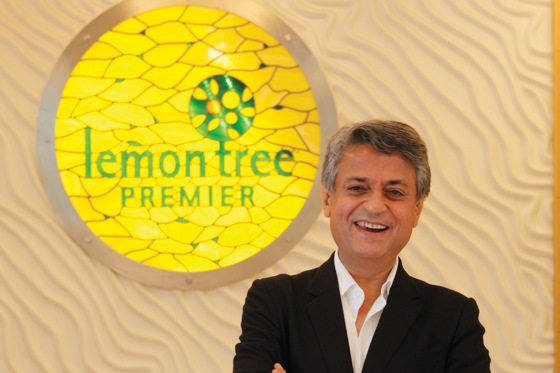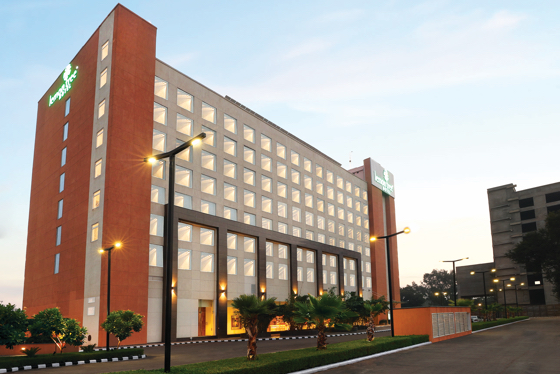Patu Keswani is something of a sensation in India’s hospitality industry as the man who reinvented the mid-market. He grew Lemon Tree Hotels from virtually nothing in 2002 to star status as the country’s largest mid-market chain and the third largest overall.
Despite the limelight of the IPO on the Bombay Stock Exchange in March, Keswani remains relaxed, although this belies a shrewd mind busy calculating future earnings. India’s hotel industry is on an up cycle after a dreadful half-dozen years; Keswani is rolling up his sleeves to capture lots of lemons.
“My theory is India is going to be supply-constrained in the next six to seven years. Pricing will improve across the industry (not just the mid-market sector). It’s a golden runway,” he told HOTELS’ Investment Outlook earlier this summer.

That’s because of a hiatus in new projects in the past five to seven years as developers shied away when RevPAR tumbled due to supply exceeding demand. So whatever comes online in the next three years will be older or deferred projects, with reports estimating supply growth will be less than 7%, Keswani said. To build a new hotel in India in time for the upswing is next to impossible, he reasons. Typically it takes at least five years because of complex regulations, processes and lengthy approvals in the different states.
Lemon Tree, on the other hand, has a confirmed pipeline to grow to 8,500 rooms in the next three years, from 5,000 rooms, meaning it will control 12% of the highly fragmented mid-market space by 2021. That excludes new sign-ons, so it’s likely the chain will have 12,000 to 13,000 rooms by 2021, controlling 15% of mid-market inventory, Keswani added.
Lemon Tree will have the supply, mostly through management conversions and owned hotels, and it will be in critical markets. Half the 2,000 owned rooms it is adding will be in Mumbai. The first hotel, with 300 rooms, will open toward year-end, while the other, of 700 rooms, will open in three years.
The road ahead in India
What makes him so sure demand will grow? Keswani pointed to economic growth in India, specifically in services and manufacturing; a pick-up in the private capital cycle; the continued rise of low-cost carriers in India; and an aspirational shift in consumption toward branded products.
With the IPO, the first for a hotel company in 15 to 20 years, “there’s a lot more visibility for Lemon Tree with owners, customers and other stakeholders such as the government of India, society at large and the capital market,” Keswani said. “Also, they expect even greater accountability and governance (from a listed company). All this leads to a virtuous circle where more owners will get interested in us based on what they know about our performance and business model… We think it will help lower our cost of debt and improve our access to capital.”
Keswani lamented that investors tend not to look at hotels as a long-term compounding play. “Hotels are longer station projects, asset-heavy in our case, and I’d like investors to look at us as a way to compound wealth by being invested with us for at least three to five years across the cycle I just spoke about,” he said. “Our business is subject to a lot of risks in the short term but if you stay invested in the long term and play out the entire cycle, the returns are typically good.”

Keswani was 42 when he opened a hotel, which “fortunately or unfortunately” did very well, and a group from Taj Group of Hotels, where he worked for over 15 years, convinced him to add a few more. “At the time, the mid-market was totally underserved,” he recalled. “Eighty percent of rooms were upper-upscale and luxury, and most Indians did not stay in branded economy or the mid-market because there was hardly any. Most stayed with families or unorganized, illegal guesthouses with questionable fire safety or security. There was an obvious potential.”
Would he add more brands to the current three – Premier, Lemon Tree and Red Fox? “I’d definitely add one more brand in the upscale/upper-upscale because a large number of customers want that,” Keswani said. “But most of it would be managed (hotels). I will also create a new brand in the context of a collection. Owners come to us to manage their hotels. Unfortunately many of the hotels do not adhere to our standards, yet I want to manage them.”
Overseas owners are also knocking. Keswani said two management contracts have been signed for hotels in Thimpu and Kathmandu, and discussions are ongoing for two hotels in Dubai and one in New York. “Over time, in an asset-light way, we should go international,” he added.
Some 25 million Indians traveled internationally last year, with an average stay of three to four nights, based on outbound flights data. That’s 75 to 100 million room nights, which Keswani said Indian consumers are giving to international hotels worldwide. Seventy percent go to New York, London, Dubai, Kathmandu, Colombo, Bangkok, Singapore and Hong Kong. “If I want to capture the full share of the wallet of my customers, then I need to offer them accommodation options even in those cities. But we don’t want to invest capital outside India at present,” he said.
For Keswani, the best part of the work is defining an opportunity and finding the talent and the capital to execute. The worst? He regrets that he no longer can recognize all his employees, of which there are around 5,500.
What’s his next dream? Keswani said he would like to see Lemon Tree become the default choice for mid-market Indian hotel guests.
